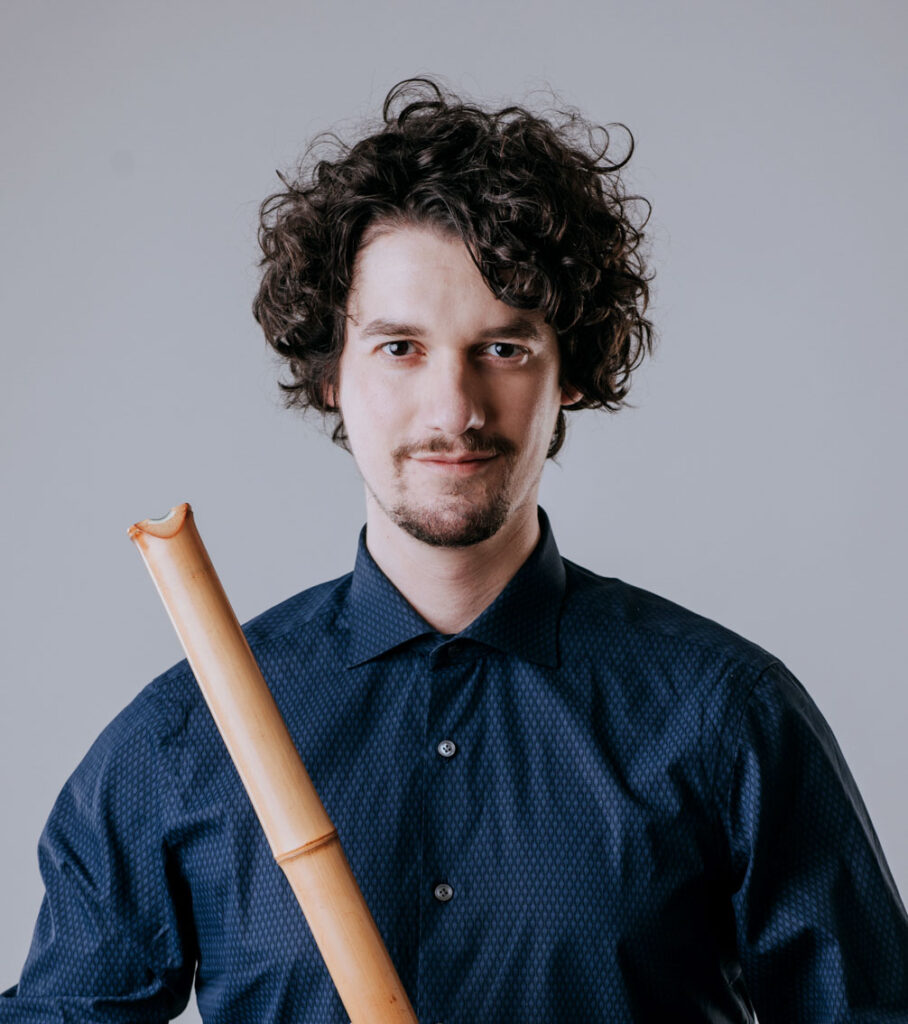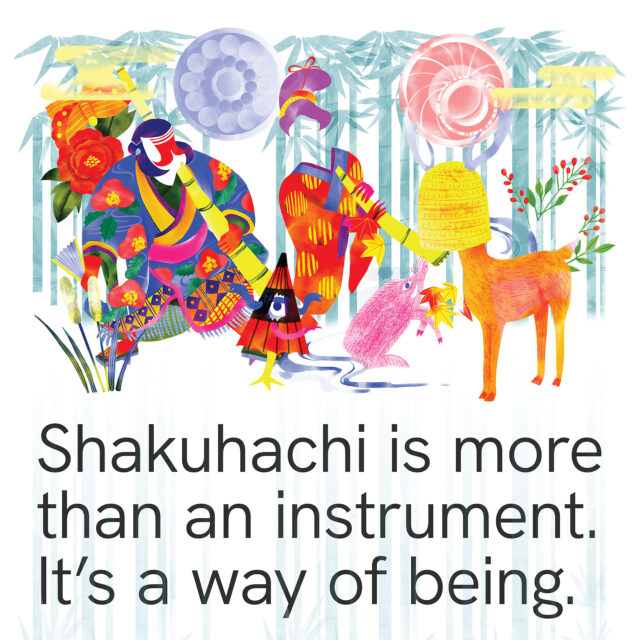What Is Shakuhachi?
A shakuhachi (尺八) is a Japanese end-blown flute. It is an extremely expressive instrument, which lends itself to portrayal of the innermost longings and emotions. Through apparent simplicity of its construction, it provides every player with great artistic freedom. However, this freedom does not come free. The shakuhachi is one of the most difficult instruments to master. In Japan, it is still used in ZEN training.
The shakuhachi is held vertically like the recorder. Unlike the recorder, the player is not blowing into a beak, but straight across a specially shaped blowing edge. It enables him to develop his or her own tone colour and change it during the course of playing for expressive purposes. The open blowing edge also enables the player to control and modulate the pitch of the tone that is produced. Thus the five finger holes can be used to produce any and every pitch across nearly three octaves range.
What does the word shakuhachi literally mean?
Shakuhachi means the length of a basic shakuhachi “1.8 foot (shaku),”. Shakuhachi flutes, nonetheless, vary in length from about 1.3 shaku up to 3.6 shaku. The longer the shakuhachi, the lower its tuning.
Shakuhachi making process
Shakuhachi is usually made of the root end part of a specially selected madake bamboo, however there are wooden and plastic versions as well. The art of shakuhachi making is an arduous undertaking that requires high manufacturing skills and playing experience. The entire inner column of the shakuhachi is carefully shaped to tune and balance the instrument.
The shakuhachi may seem a simple and rather crude instrument. However, each step of shakuhachi making is a meticulously designed procedure typical for all Japanese high-end craftsmanship. When the beauty and functionality of a shakuhachi intertwine, the price of such an instrument may reach millions of yen.
Shakuhachi outside Japan
Since the 1950s and especially after the premiere of Toru Takemitsu’s November Steps by the New York Philharmonic, the shakuhachi has inspired and continues to inspire artists, musicians and composers across the world. Some of the well known artists involved with the shakuhachi including Henry Cowell, John Cage, Andrei Tarkovsky, Peter Eötvös and many others.
By the end of the 20th century, there were a handful of excellent professional non-Japanese players spread across the globe. In the 21st century numbers of shakuhachi players outside of Japan grow rapidly, as the instrument gains more and more exposure and popularity. Important vehicles for promotion of the shakuhachi are events such as the International Shakuhachi Festival Prague.
Zen and shakuhachi
Deep breathing, calmness and attentive mind are required in Zen and shakuhachi playing alike. “Ichi-on-jo-butsu” or “in one tone become a Buddha”, is a motto shared by many shakuhachi players across the world. It portrays the players’ dedication to reach enlightenment. Compositions that serve as vehicles for this undertaking are called honkyoku, and form the crucial and ever evolving repertoire of the shakuhachi.


